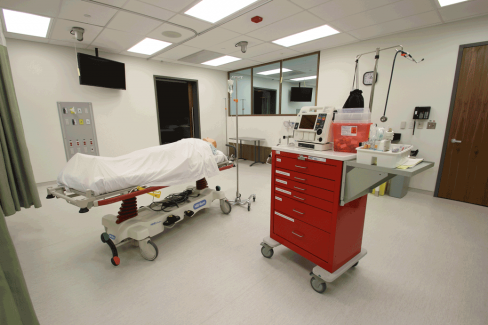Centre for the Future of Simulation

The medicine is not the tough part. The tough part is actually doing it.
Simulation is an incredibly valuable tool for teaching and learning – it allows students to bridge the gap between theory and practice in a safe, controlled environment. Still, simulation is largely underused in medical training. “Simulations” of the past were reliant on dummies, whose symptoms would be described by a technician that students would in turn respond to. The utility of this training is limited because it’s not entirely realistic. For Dr. Daniel Howes of the Queen’s School of Medicine, simulations complete with real-world stressors, supports, and cues are particularly important for students who are interested in working in high-stress situations. As a specialist in Emergency Medicine, Dr. Howes knows that the ability to act quickly and divisively in trauma situations is critical – something that a person does not learn while interacting with a dummy.
This is where technology becomes important. With recent advances such as holographic conferencing, artificial intelligence and the like, the future of medical simulations is an exciting one. The Centre of the Future of simulation was opened to prepare for this, and includes researchers in engineering, computing and health sciences. Together, they hope to develop next-generation simulators with the ability to teach, monitor, and evaluate student progress. The end result will be an immersive, personalized educational experience.
For more information of the Centre for the Future of Simulation, browse the Clinical Simulation Centre website.